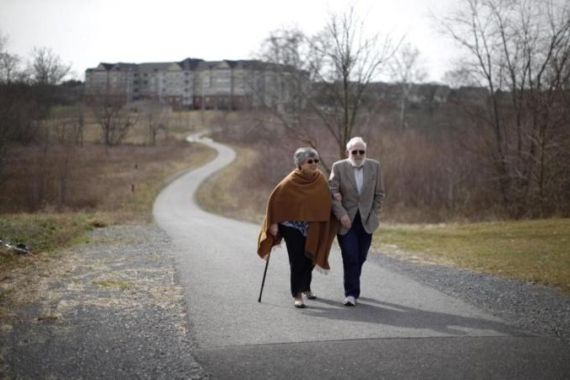The return of the demographic crisis
The projection of a continued decline in the ratio of workers to retirees is nothing to worry about.

Washington, DC – There is a renewed drum beat in the media about the coming crisis in both the United States and elsewhere of an ageing population. The story goes that we will have too few workers to support a growing population of retirees – scary stuff. While this is probably good grist for the Washington cocktail party circuit, it is not the kind of thing that normal people need take seriously.
The idea that we should be troubled by the prospect of a stagnant or declining population is almost laughable. This is like an overweight person being worried over the fact that they have lost 20 pounds. Under most circumstances this is good news.
Keep reading
list of 4 items‘We need you’: Solomon Islands’ support for US agency’s return revealed
Why are nations racing to buy weapons?
Parallel economy: How Russia is defying the West’s boycott
At the most basic level, the demography gang is trying to tell us that we are running out of workers. Really? Is that the problem we see in the United States with our 8.2 per cent unemployment, in France with 10.0 per cent unemployment, or in Spain with an unemployment rate of more than 24.0 per cent? Regardless of where we look, the problem is too many workers for too few jobs. If many of these workers suddenly chose to retire, what exactly would be the problem?
In principle we should expect this downturn to end at some point, although most major forecasts show the United States and other wealthy countries experiencing excessive unemployment throughout the decade. As long as the economy is suffering from a problem of high unemployment it is difficult to see how the high ratio of retirees to workers is posing a problem.
Supposing that we do get to a point where economies are again at full employment, it’s still difficult to see why a shortage of workers will pose a serious problem. The 130 million jobs in the US economy carry varying degrees of importance. Some, like nurses, teachers and firefighters, are very important to the economy and society. Others, like the midnight shift at a convenience store, are considerably less important.
If we get to a situation in which labour is in high demand, then the wages of nurses, teachers, and firefighters will rise relative to the wages of people working the midnight shift at convenience stores. The result will be that convenience stores may not be able to find workers for the midnight shift and therefore may have to close down from midnight until 5 AM.
There are in fact tens of millions of jobs like the midnight shift in the convenience store. If we get a tight labour market then we might see hotels that only clean guest rooms every other day. We may see more cafeterias and less sit-down restaurants. Fewer clerks would be available to provide service in department stores. Cabs will become harder to find in major cities. Fewer hotels and restaurants would offer valet parking. Are you scared yet?
This is what happens as an economy grows. Workers move from less productive jobs to more productive jobs. This is the reason that we have relatively few people employed in agriculture. Workers are more productive in manufacturing or the service sector, so they left the agricultural sector.
| China’s ageing population |
As workers’ productivity increases they can easily support a large population of retirees. Fifty years ago there were five workers for every retiree; today the ratio is less than three to one. Yet on average we enjoy far higher living standards today than we did fifty years ago. This is due to the fact that productivity is more than 2.5 times as high as it was fifty years ago. This is likely to be the same story going forward.
That is why there is no reason that we should be scared by the prospect that the ratio of workers to retirees is projected to continue to decline. If productivity grows at a normal pace we will able to have a lower ratio of workers to retirees and still see a rise in living standards for both workers and retirees.
It is especially entertaining to hear the claim about a demographic crisis in China. China has been seeing productivity growth of close to 8.0 per cent a year as workers leave relatively unproductive work in agriculture and take up much more productive employment in industry. At this rate, productivity is doubling every 9 years or so, meaning that over a generation an average worker’s output will have increased fourfold. This means that even if there is a sharp fall in the ratio of workers to retirees in China, both will still be able to enjoy much higher standards of living than the preceding generation.
The other part of this story is that the only practical way to prevent the ageing of the population would be to have more children. This would impose an enormous burden on the infrastructure and natural resources, especially given the problem of global warming. Insofar as the ageing of the population is associated with less crowding, we will be seeing gains that for the most part will not be picked up in standard economic measures: such as less crowded transportation, fewer traffic jams, easier access to sites like beaches and riverfronts.
In short, the ageing of the US and world populations should be viewed as overwhelmingly positive. There is no reason to fear that it will impoverish either our parents or our children.
Dean Baker is an American macroeconomist and co-founder if the Center for Economic and Policy Research.
Follow him on Twitter: @DeanBaker13
